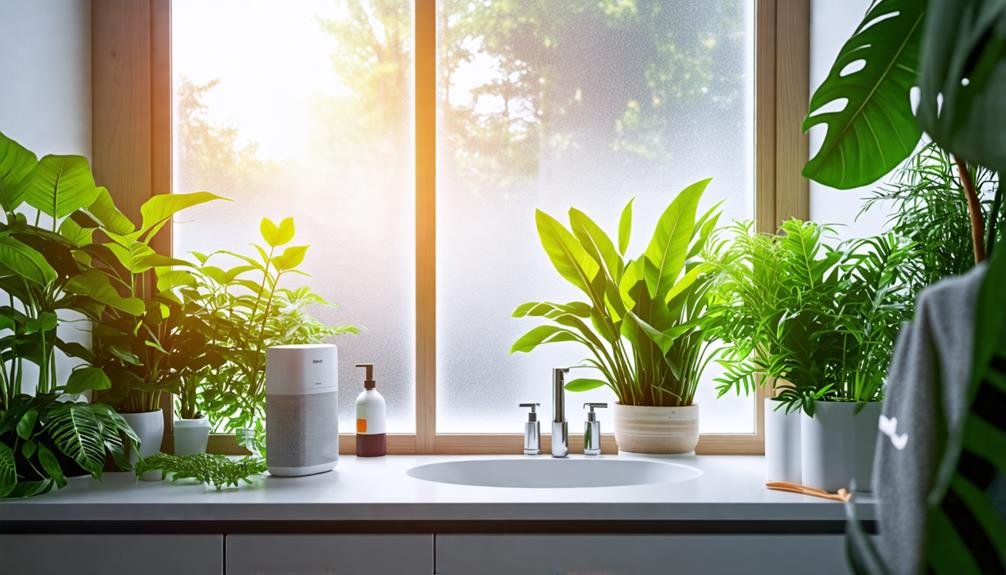Using banana peels to fertilize hydrangeas can boost blooming due to their nutrient-rich content, particularly potassium and phosphorus. These nutrients are essential for plant health; potassium promotes overall strength, while phosphorus aids in root establishment and flower development. For effective application, composting banana peels is beneficial because it improves nutrient availability and soil structure. Ensure a balanced approach by combining peels with other organic materials, maintaining sufficient aeration and moisture. Regular soil tests also help determine nutrient needs. This eco-friendly practice supports sustainable gardening and leads to more vibrant hydrangeas. Further insights will reveal additional techniques for optimal bloom improvement.
Benefits of Banana Peels
Banana peels are a rich source of potassium and phosphorus, making them beneficial for compost bins that enhance soil fertility. These essential nutrients play a vital role in plant health, especially in promoting robust growth and colorful blooms in flowers such as hydrangeas. When added to compost, banana peels act as a natural fertilizer, supporting an eco-friendly gardening approach.
Using banana peels in your compost aligns with natural fertilization methods, such as maintaining a proper balance of nitrogen-rich greens and carbon-rich browns. This equilibrium promotes effective decomposition, enabling microorganisms to break down organic matter without negatively impacting the soil's nitrogen levels. Furthermore, composting banana peels instead of throwing them away encourages sustainability, fostering a nutrient cycle that benefits both plants and the environment.
Composting Banana Peels Effectively
Incorporating banana peels into a well-managed composting system enhances nutrient availability for plants while promoting efficient decomposition. Banana peels, rich in potassium, phosphorus, and calcium, are vital for plant growth, particularly for hydrangeas. To compost effectively, balance the peels, classified as 'green' materials, with 'brown' materials like dry leaves or cardboard. This ratio creates an optimal environment for microbial activity, facilitating quicker breakdown.
Typically, banana peels can take a long time to decompose if left on the ground or buried directly in soil. However, within a healthy compost bin, they can break down in approximately four months. Regular aeration of the compost pile and maintenance of moisture levels will accelerate decomposition rates. Monitoring the temperature of the compost is also essential; a warm pile indicates active microbial breakdown.
Ultimately, composting banana peels not only reduces waste but also enriches the compost, serving as a valuable soil amendment that significantly boosts the growth and blooming potential of hydrangeas and other garden plants.
Hydrangeas' Nutritional Needs

Hydrangeas require specific nutrients to thrive and produce vibrant flowers. These flowering plants need a balanced diet that includes macronutrients like nitrogen, phosphorus, and potassium, along with essential micronutrients such as magnesium and iron. Nitrogen supports leaf growth, phosphorus aids in root development and blooming, while potassium enhances overall plant health.
Soil pH significantly influences hydrangea nutrition and flower color. Acidic soils, with a pH between 5.2 and 5.5, tend to produce blue flowers, while alkaline soils result in pink blooms. Regular soil testing is essential for maintaining optimal pH and nutrient levels.
As heavy feeders, hydrangeas require additional fertilization during their growing season. A balanced fertilizer, such as Miracle-Gro Water Soluble All Purpose Plant Food, should be applied in spring and early fall to meet their nutritional needs. Care should be taken to avoid over-fertilization, which can lead to lush foliage but fewer flowers. By understanding these nutritional requirements, gardeners can cultivate healthy hydrangeas that enhance any landscape with their stunning beauty.
Best Fertilization Practices
Understanding the nutritional needs of hydrangeas is crucial for effective fertilization, leading to strong growth and vibrant flowers. Start by conducting a soil test. This assessment reveals nutrient levels and helps determine the best fertilizers for your hydrangeas. These plants require significant nutrients, so a balanced fertilizer, such as Miracle-Gro Water Soluble All Purpose Plant Food, should be applied in spring and early fall to provide essential nourishment during active growth periods.
When selecting a fertilizer, choose one with an equal ratio of nitrogen, phosphorus, and potassium to support overall health and encourage blooming. Hydrangeas prefer acidic soil, which affects their flower color; therefore, monitoring soil pH is essential for achieving desired colors, especially for blue blooms.
While composted banana peels can enhance soil quality, they should not be the primary nutrient source. Instead, use high-quality compost, like Black Kow Composted Cow Manure, as a soil amendment to enrich the soil and promote beneficial microbial activity. By following these best practices, you can grow stunning hydrangeas that thrive and showcase their beautiful blooms.
Combining Compost With Fertilizers

Combining organic compost with chemical fertilizers can create a synergistic effect that enhances nutrient availability and supports the overall health of Hydrangea macrophylla. This mixture improves soil structure and fosters an environment where these flowering shrubs can flourish. Organic compost provides essential nutrients while promoting beneficial microbial activity. When paired with fertilizers, it optimizes nutrient uptake, ensuring Hydrangea macrophylla receives the necessary elements for vibrant blooms.
Key benefits of this combination include:
- Enhanced Nutrient Retention: Organic compost retains moisture and nutrients, minimizing the leaching effect of chemical fertilizers.
- Balanced Nutrient Supply: Chemical fertilizers deliver immediate nutrients, while organic compost offers a slow-release option over time.
- Improved Soil Structure: The organic matter in compost enhances aeration and drainage, creating a favorable environment for root development.
Incorporating both organic compost and chemical fertilizers into your Hydrangea macrophylla care routine allows for a comprehensive gardening strategy that promotes plant health and environmental sustainability.


















You must be logged in to post a comment Login